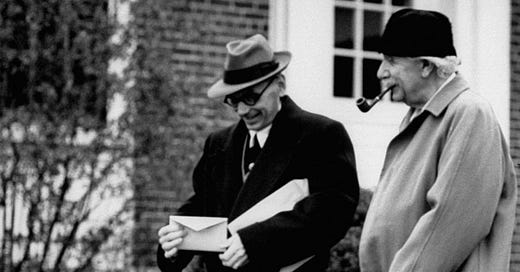Kurt Gödel's Brilliant Madness
“Modern math’s absolute Prince of Darkness” — David Foster Wallace
This essay is also available in audio format and on Kindle.
Hungarian polymath John von Neumann (1903–1957) once wrote that Kurt Gödel was “absolutely irreplaceable” and “in a class by himself”. Describing his 1931 proof of Gödel’s incompleteness theorem, von Neumann called the achievement
“Singular and monumental — indeed it is more than a monument, it is a landmark which will remain visible far in space and time. The subject of logic will never again be the same.”
von Neumann was not alone in his admiration of Gödel. A young Alan Turing (1912–1954) sought Gödel out in 1936 to inquire about his own monumental reformulation of Gödel’s incompleteness result which showed the limits of proof and computation. Towards the end of his life, Albert Einstein (1879–1955) confided to Oskar Morgenstern (1902–1977) that although his
“Own work no longer meant much, that he came to the Institute merely … to have the privilege of walking home with Gödel”
…
Keep reading with a 7-day free trial
Subscribe to Privatdozent to keep reading this post and get 7 days of free access to the full post archives.




